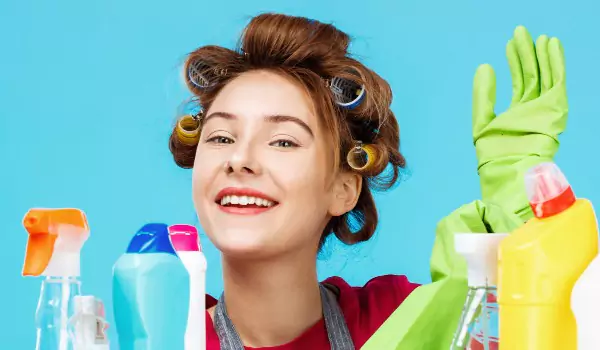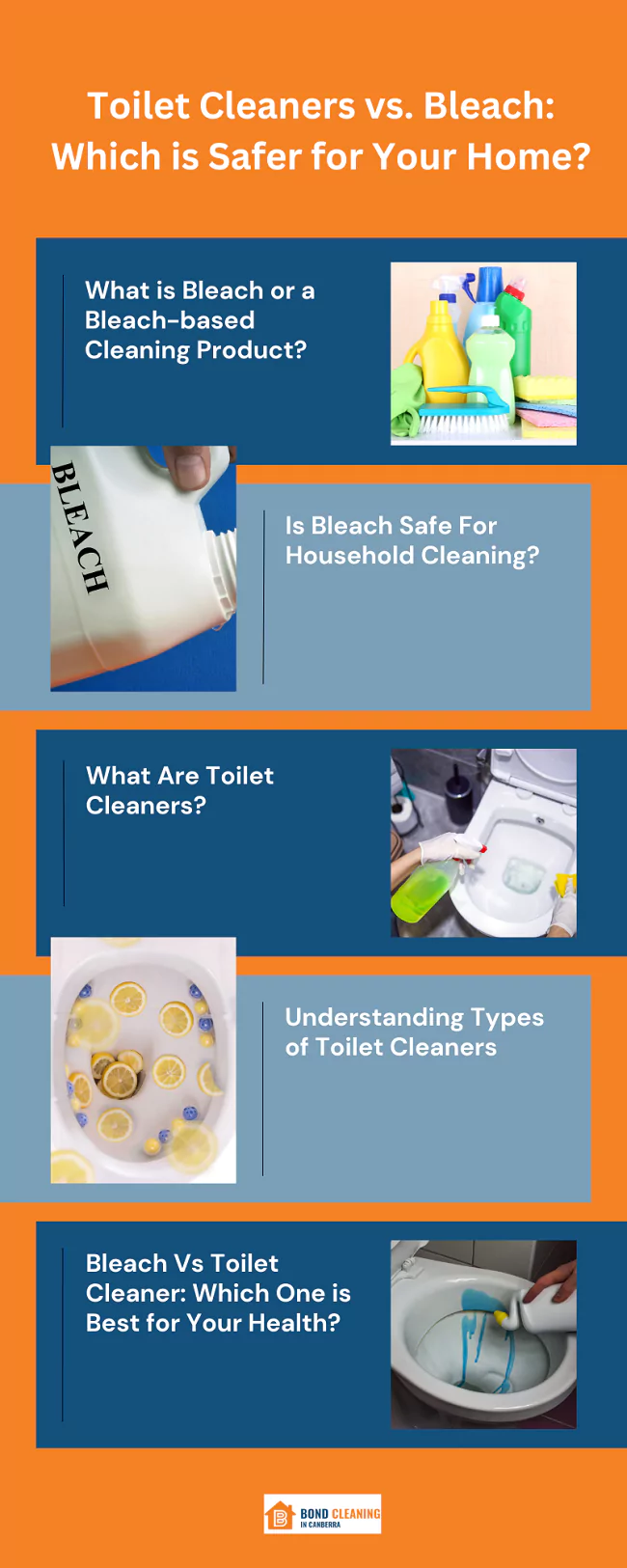Toilet Cleaner Or Bleach: What’s Best For Your Health?
Dirty bathroom fixtures and fittings are a haven for lethal germs, bacteria and mould spores. The accumulated layer of soap scum, mineral deposits, rust stains and gunk on tiles, showerheads, bathtubs and toilet seats can cause various health-related concerns.
If you want to maintain the hygiene levels of your home, clean and disinfect your bathroom surfaces, especially a toilet seat, using proper tools and products. The two popular choices that come to mind are bleach and toilet cleaner. Both are strong and effective cleaning products that remove stains and banish germs from surfaces, leaving your bathroom sparkling clean.
However, both of these products contain chemicals that may affect your health due to long-term exposure. Thus, it is important to understand their usage, the right quantity, and side effects before making a wise decision.
If you want to make a choice between a toilet cleaner and bleach as a safe cleaning agent, look at the following guide and pick the right option for your home. Ensure you adhere to baby home safety when using any store-bought cleaning agent to tackle dirt and grime.
Let’s Get Started!
1. What is Bleach or a Bleach-based Cleaning Product?

Bleach is one of the most common traditional cleaning products used to whiten and disinfect surfaces. It is a diluted solution of sodium hypochlorite, a strong chemical that can banish most types of germs, mould, mildew, brown stains and calcium deposits from surfaces.
It is versatile chemical compound that can help you whiten fabrics, disinfect bathroom surfaces, clean sinks and faucets, and much more. However, it may not tackle toilet stains and grime as effectively as store-bought toilet cleaners. Still, many professionals use household bleach when performing a cheap end of lease cleaning Canberra, ACT.
2. Is Bleach Safe For Household Cleaning?
Of course, bleach is a powerful disinfectant, but it can be harmful if inhaled, ingested, or comes into contact with eyes and skin. What’s worse? Long-run exposure to bleach-based products can even cause chronic diseases. Here are some potential health risks of using bleach at home:
- Respiratory Problems: Bleach fumes can cause coughing, breathing difficulty and wheezing.
- Lung Damage: Excessive exposure can increase the risk of asthma or lung damage.
- Skin Irritation: Direct contact with bleach can cause burns and redness
- Eye irritation: The fumes can cause eye infection or redness.
Note: If someone accidentally inhales or ingest bleach, seek medical assistance immediately. Also, keep bleach or store-bought cleaners away from kids and pets.
3. What Are Toilet Cleaners?
Toilet cleaners are designed to clean and disinfect toilets. Store-bought cleaners usually contain strong chemicals and surfactants to remove brown stains, calcium deposits and lurking germs. These products contain different combination of chemical compounds, including:
- Hydrochloric Acid: Dissolves mineral deposits effectively
- Surfactants: Lifts stubborn stains and dirt
- Citric acid: Dislodges limescale and rust stains
- Ammonia: Removes grease and grime
- Thickeners: Promotes sparkling shine
- Corrosion inhibitors: Prevents metal parts from corrosion
- Sodium Hydroxide: to unclog drains
- Synthetic Fragrances: Banishes bad odours
Unfortunately, these components can pose serious health hazards.
4. Understanding Types of Toilet Cleaners
Professionals use the following types of toilet cleaners for a quality end of lease cleaning Canberra. Here is a complete breakdown:
- Gel Cleaners: These are great for removing stains and limescale from your toilet seat. You can apply using a squeezable bottle and leave it for a few minutes before scrubbing with a brush.
- Liquid Cleaners: It is a versatile option and can help you dislodge dirt and stains effectively. Many toilet cleaners contain bleach and other strong chemicals to leave the surface sparkling clean.
- Tablets: These are the most convenient cleaning tools to help you maintain a clean and sparkling toilet all day. Place a tablet inside the toilet tank, which will clean the surface with every flush. However, it may not tackle stubborn stains or rust.
- DIY Natural Cleaning Options: With the increasing awareness of sustainable living, people are heading towards green cleaning products. You can also make a natural toilet cleaner using white vinegar, mild dishwashing, and castile soap to remove stains and grime. Baking soda is a natural deodoriser and can effectively prevent the spread of germs and bad smells from your toilet bowl.
5. Bleach Vs Toilet Cleaner: Which One is Best for Your Health?
Bleach is a powerful whitening and disinfecting agent. However, it contains hazardous chemical compounds that can pose serious health hazards. To prevent the spread of toxic fumes, make sure you wear gloves and a face mask and ensure proper ventilation.
Store-bought toilet cleaners, on the other hand, contain bleach, ammonia, and other VOCs that are not safe for your health. Of course, these products can help you remove stubborn toilet stains, but they could also lead to serious health problems and respiratory disorders.
In such a situation, you should prefer using eco-friendly toilet cleaners that contain diluted white vinegar and warm, soapy water. Pour the solution and leave it for a few minutes before scrubbing with a brush. Next, pour a cup of baking soda and scrub gently.
The best part is that eco-friendly cleaning agent is affordable and super-effective, making it a better choice for everyday use. If you are concerned about the entire rental property, hire experts for a cheap end of lease cleaning Canberra and retrieve your hard-earned bond money without any dispute. They follow the correct order to clean your home and leave no signs of dirt and grime behind.
Toilet Cleaners vs. Bleach: Which is Safer for Your Home?

Wrapping up
Whether you are using bleach or a homemade toilet cleaner, ensure you follow the safety measures and prevent its side effects on your health. Keep all cleaning chemicals and tools away from kids and pets and maintain a healthy indoor environment.

